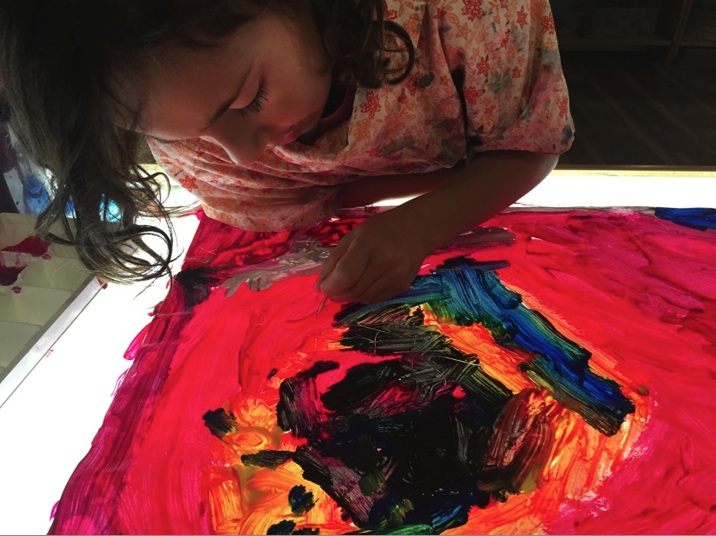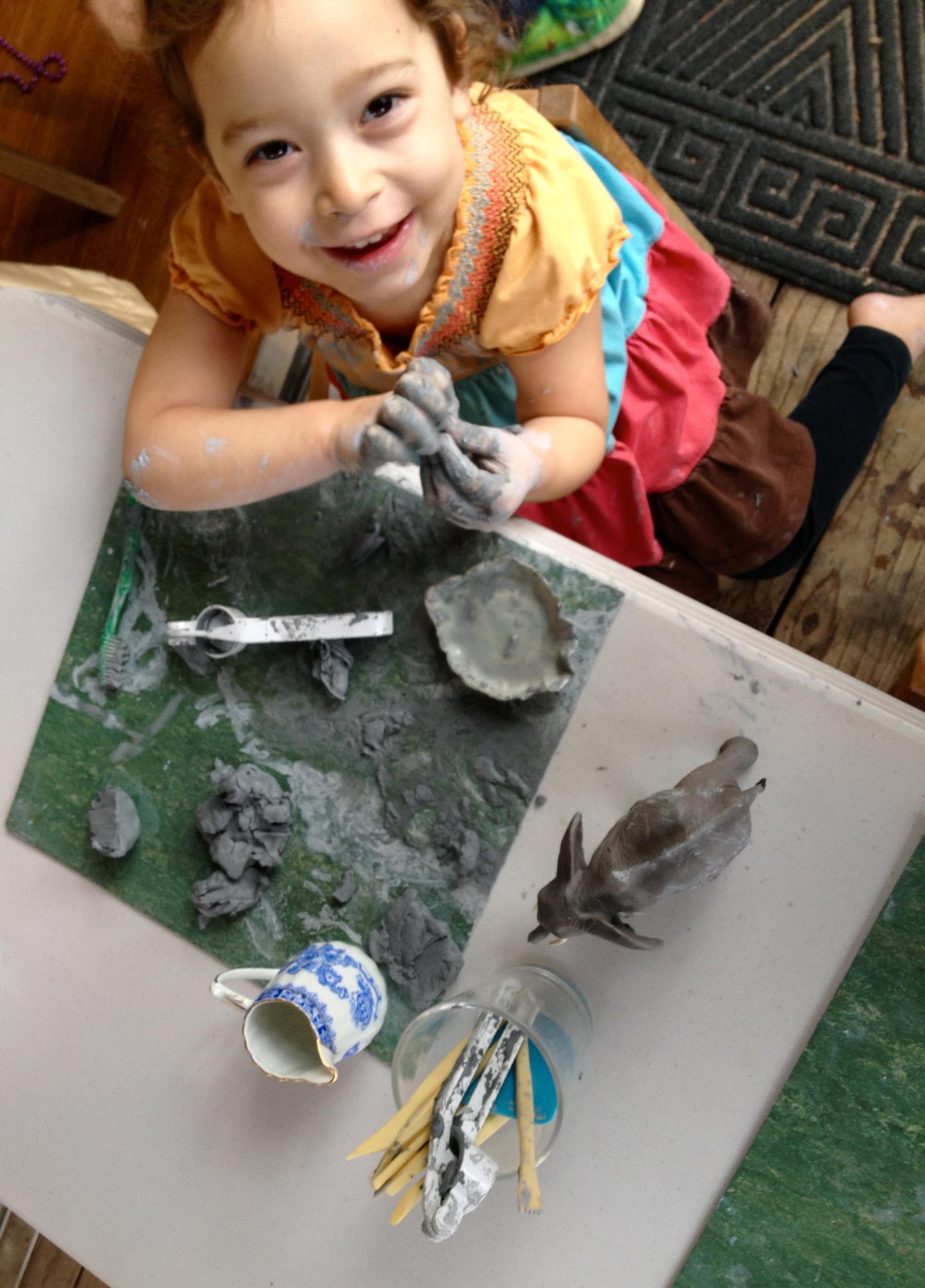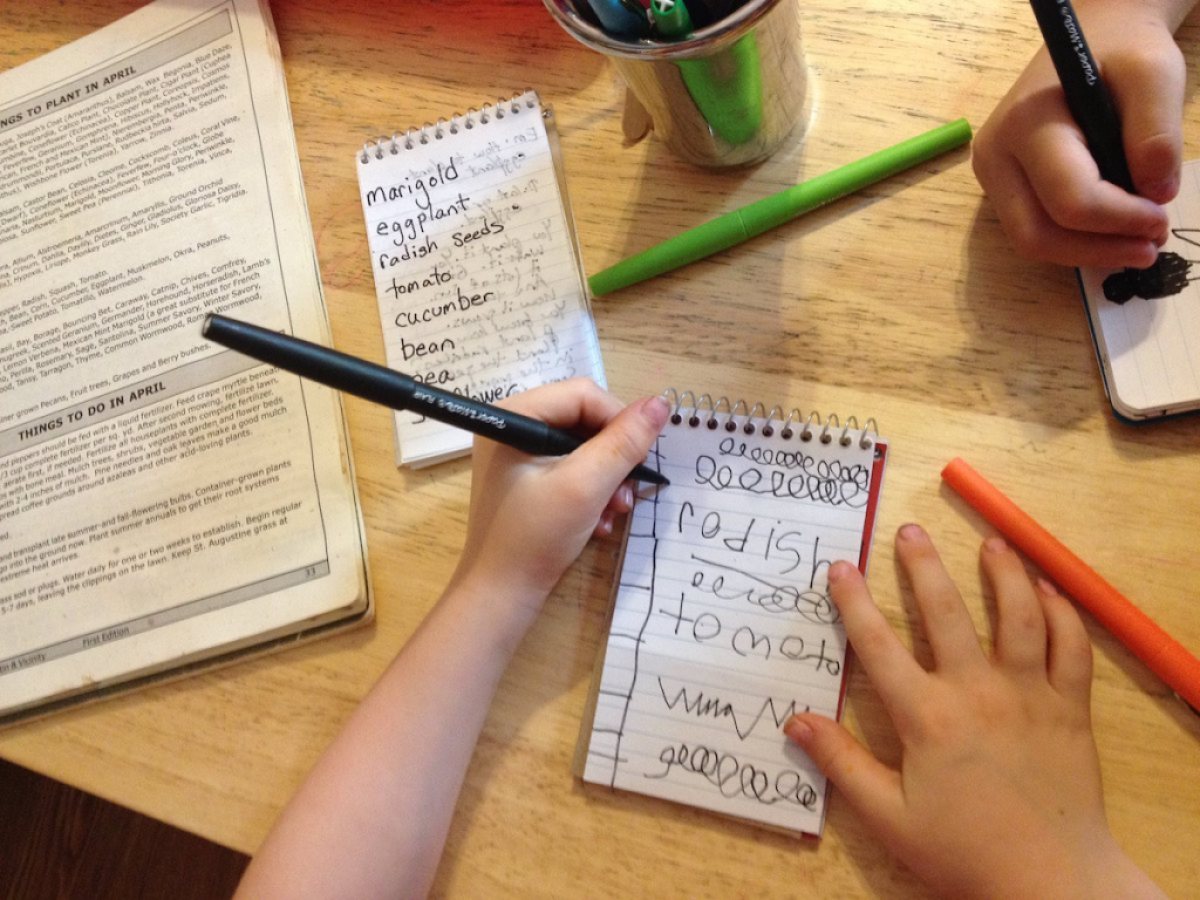We are fully enrolled for fall 2024 but accepting waitlist interest for the 2024- 2025 school year and beyond.
- Mon – Thurs, 9:30- 2:30
- Ages 3-5, max class size of 12 children led by 2 teachers
- South Austin location, near Dittmar Recreation Center
- See our FAQ page for tuition rates & more

Our Program
Tigerlily is designed to support children’s exploration in a beautiful space, engaging children’s curiosity, eagerness, and innate ability to build their knowledge of the world around them.
Teachers here pay close attention to the children to gather information to better understand each child’s interests. “Yesterday I noticed that you were talking about the prism in the window, would you say more about it?”
Based on our observations and conversations with children we adults think about how to develop investigations of the things the children find interesting.
Each new discovery produces additional questions and opportunities to explore. This exploration weaves in and out of the classroom, spills into our garden, encourages activity, movement, play, exploration and honors imagination.

We keep notes on each child’s learning, writing and recording our comments about friends, activities, mistakes and triumphs, opportunities to try again, recording the stories they tell and the art they create in response to their daily exploration and experience. This work is displayed in our learning space and through a daily letter to the children’s grownups, which they often discuss with their children, and which becomes a part of the classroom library, to help us remember, inviting continual conversation and collaboration between home and school.

We believe that creative expression is central to a vibrant childhood. Each child has the opportunity to draw, paint, collage, build, and work with clay daily. With this daily access, art materials become powerful languages for the child to express their thoughts, ideas, questions, worries, and wonder.

Children are encouraged to become fluent in expressing themselves through their drawings, paintings, and sculptural work. These creations are seen and treated with a lot of respect and purpose.

We know that children grow through play.
Children are social beings and much of their world centers on their relationships with others.

Special friendships form, all kinds of feelings blossom, and we work together to solve problems. We encourage children to construct their own solutions with access to the teacher support they need. This makes our program a safe place for every size and kind of feeling.
Every day with young children is a day to engage in the work making our world a better place. When something doesn’t feel fair, children notice. We are here to learn more, to think more deeply together, and to take action to make our classroom a good feeling place for everyone. We affirm and welcome all family structures, gender identities, and seek to support children as change makers.

Reggio Emilia is a small city in Italy that has developed a wonderful childcare system for young children. We so admire the ongoing work of these educators in collaboration with their communities and respectfully describe Tigerlily as being a Reggio-inspired program. In that town, above the school door it says niente senza gioia. Nothing without joy.
We believe our time together must be truly joyful.
Early literacy and numeracy flourish throughout our environment. Conversation, story, and song flow throughout our daily experience.

As children show readiness and interest in learning to read each child builds their very own collection of words that matter to them: Mama, monster, gargoyle, I love you, trouble, friend. A child who can read the words that matter to them is a child who begins to know themselves well too. Writing begins with their earliest mark making, writing their own picture books to share with others.
Math experiences emerge from our natural use of numbers, negotiation of limits (for example, my turn on the swing is over when you’ve counted to thirty), daily problem solving of all kinds, and powerfully through our emphasis on building and making.


Children are capable and confident problem solvers, curious about challenges, and take great delight in expanding their knowledge of the world around them. This place will allow them time and space to explore these wonderful learning adventures of childhood.

Agency is the idea that when we act, and act with purpose, we effect change upon our environment. Babies are agentive, reaching out into the world, building knowledge, ability, and strength from their own active experience without a negative internal voice suggesting otherwise. “I can’t” comes later when adults tell children they are too small, what they want to do is too dangerous, or there’s not enough time to allow for all that pokey trying. But children need thoughtful adults to hold the space for them to explore with the trust and awareness of their own inner judgment. Do what feels right for you in your own body, we can tell a child who’s thinking about whether to make the swing go higher. Hold tight with both hands (safety rule!), but do what feels right to you.
As a vital part of our teaching we observe children so as to understand them better. We strive to be a supportive presence that honors the children’s agency.
When things get stuck, teachers can state what they see: Hmmm, I can’t let you push him, but tell me about what’s not working. This play isn’t working yet, but I know we can figure this out. Then we ask questions. What do you think? How else could you ______? Can you think of another way to _____? How could we find out? And a favorite question for a child who has just made something interesting happen is how did you do that? The response will be wonderfully agentive: Well, I wanted to make a moon in my book but I didn’t know how. But then we made a practice. I tried different shapes. Small. And big big big. And I make a little baby purple moon and I put the baby moon in my book to be for the goodnight and it was just right!
We want children to keep their strong sense of agency and from that imagine new possibilities.
